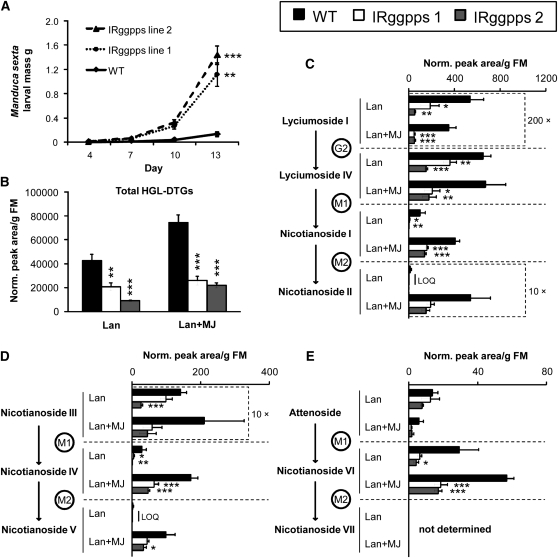Figure 7.
Total HGL-DTGs Have a Significant Effect on the Growth of the Specialist Herbivore M. sexta.
(A) Mass of M. sexta larvae feeding on two independently silenced IRggpps lines versus the wild type (average ± se; final n = 7 to 15 plants with one larva per plant; see Methods). Larvae grow significantly larger on both lines of IRggpps: growth on IRggpps line 1 was significantly faster by day 4 (P = 0.018) and on both IRggpps lines by day 7 (line 1, P = 0.011; line 2, P = 0.016) as determined by a repeat-measures ANOVA followed by Bonferroni-corrected tests for each day. For clarity, significance is shown only for day 13: ** P < 0.01 and *** P < 0.001.
(B) to (E) Total HGL-DTGs (B) and concentrations of individual compounds ([C] to [E]) in mature young rosette leaves of the wild type and both lines of IRggpps 3 d after treatment with lan or lan+MJ (average + se). Note that some compounds have been multiplied by constants to fit the scale of the graph and that scales change among graphs.
Asterisks indicate significantly lower levels of HGL-DTGs in IRggpps in one-way ANOVAs within treatment (*P < 0.05, ** P < 0.01, and *** P < 0.001 in Bonferroni-corrected tests). LOQ, below limit of quantification.

